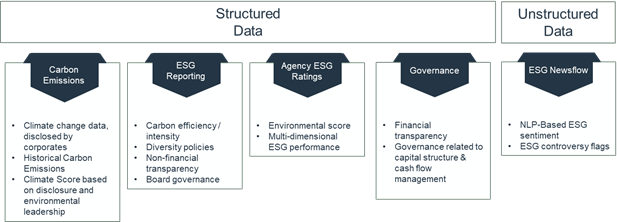Sustainable Alpha
A Leading Approach
A leading approach to sustainable alpha
Historically, as the availability of data was relatively scarce, the reflection of our Environmental, Social and Governance (ESG) philosophy was expressed through exclusionary screening. This consisted of avoiding stocks that failed to meet our moral and ethical values.
In recent years, the proliferation of ESG data reported by companies has enabled our research team to build their expertise in systematic ESG investing, allowing them to develop a deep understanding of the fundamental mechanics behind best practices. We integrate extensively ESG characteristics within most of our Equity Fund range and we continue to make progress on their integration into certain fixed-income funds like the RAM Global Bond Total Return Strategy.
Focus on ESG Integration Equity
We consider ESG as one of the four dimensions of our ultimate investment objectives, next to alpha, risk and liquidity. Our research indicates that ESG brings into the investment process a sustainable angle to the selection that makes it more socially responsible but also can help reduce long-term investment risk and help enhance returns in the fund (Please see ESG Integration and ESG2Risk papers).
We fully integrate ESG elements in our systematic approach to stock selection. Leveraging off our deep learning platform and by marrying structured and unstructured data, we look to identify the sustainable alpha opportunities in our dynamic universe of stocks.
ESG to define an SRI investment universe
Our investable universe of stocks is filtered initially to exclude harmful companies (see Exclusion section), a process assisted by our Natural-Language-Processing infrastructure that scans thousands of news each day on our investable universe to identify companies subject to ESG issues and controversies.
ESG as input to our Deep Learning alpha and risk predictions
We leverage the growing number of ESG data sources (internal and external) to create investment inputs that measure clear ESG characteristics, carry value-added information from traditional sources and improve our return, volatility and volume predictions. Among our main external data providers, we can mention CDP, MSCI ESG, Bloomberg. See below our different type of data sources:
ESG integration in the fund’s alpha objective
We are able to identify across different styles (Value, Low Risk and GARP-Momentum, etc.), across market cap segments companies with the most attractive growth, fundamental and risk characteristics that will make up our portfolio. Our deep learning platform then provides us with a predicted alpha and volatility profile for each stock, which after being biased towards ESG enables us to scale each stock’s weight to maximise the sustainable alpha of the portfolio. This results in a best-in-class stock selection with high alpha expectations.
The optimisation process provides us with a multi-angled view across alpha, volatility, risk and ESG.
Leveraging on RAM AI’s Technology
RAM AI uses third party provider ESG ratings as well as internal ESG ratings based on data gathered by different data providers to assess with more granularity the sustainability of our investments.
For equities and corporate issuers, to assess the sustainability of an investment, RAM AI leverages the growing number of ESG data sources (internal and external) to create investment inputs that measure clear ESG characteristics, that can carry value-added information from traditional sources and can improve potentially the return and risk control. RAM AI’s main external data providers are: CDP, MSCI ESG, Bloomberg, See below RAM AI’s different types of data sources:

For sovereign bonds, RAM AI relies on data from the World Bank to generate a rating for each constituent on E, S, and G in order to assess the different aspects’ value of the E, S, and G spectrum and define a rating for each issuer we invest in. RAM AI relies on more than 30 factors to assess the sustainability of an issuer, amongst which:
- CO2 emissions from consumption of fossil fuel
- Forest area % of the land
- Freshwater withdrawals
- Percentage seats held by women in parliament
- GINI income inequality
- Political risk score
- Control of corruption, etc
